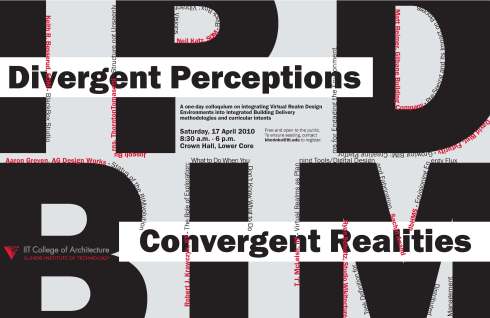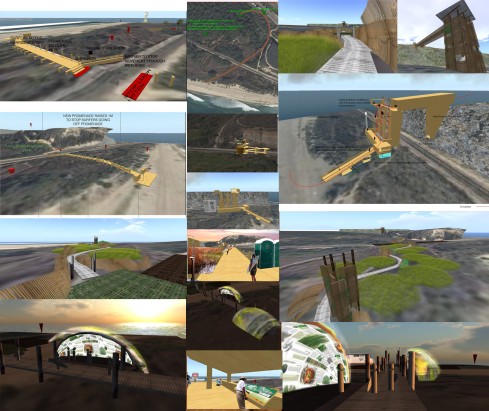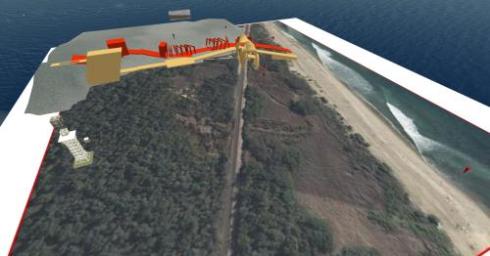
Can we win this thing?!? We’ve done it before, and we could do it again, but we need your help, and it isn’t too late to be sure your name is on the contributing team list!
We’re now in the final lap, and need to quickly pull together our final presentation – due on Saturday, April 17th!
If you haven’t had time to contribute yet, it isn’t too late! There are still lots of ways you can help out. If you don’t know how to use the Wiki Tree, not a problem! That part of the design process is behind us now, and we’ve set up some simplified ways to gather your input and ideas. We need your help now more than ever, so please don’t hesitate to roll up your sleeves and help us win this thing!
There are three primary efforts underway that we need your help with.
FIRST FOCUS AREA: CONCEPT GRAPHICS FOR PRESENTATION BOARD
First, we would like to invite you to contribute and vote on graphic layouts for our final poster board. We’re using Ideascale.com, which allows you to vote and contribute easily through their website. Here’s the link: http://studiowikitecture.ideascale.com/a/panel.do?id=4700
We will use this site to brainstorm the overall graphic concept and layout of the ‘Presentation Board’ portion of our entry. The concept we develop will then be used as a theme, or guideline for organizing the other required graphics. The ideascale can be someone flaky, so if you get stuck, try posting on our ning site for help. Here’s what the competition organizers ask for, specifically:
“Presentation Board @ 24″x36″ Landscape format(REQUIRED) – The presentation board should clearly display the entrant’s approach. The organizers will use this image as the primary board to display in exhibitions, publications and in community meeting in the field. This board MUST be the first image to appear in the slideshow.”
I uploaded a sample concept that you should see on the Ideascale site (linked above) – called ‘Initial Concept Idea’. You should be able to vote for or against it (and any other ideas contributed)- even without logging in. If you care to submit a concept of your own, you’ll need to set up an account, then click ‘New Idea’. There, you will be able to name and describe your idea. After creating the idea, you can then upload an images or file of your design concept. Please upload your layered construction file as well (.psd, etc.) so other contributors can build from or modify your idea.
ALL ENTRIES MUST BE CONTRIBUTED BY THE END OF THE DAY, MONDAY, APRIL 12th!!!
Everyone will have until end of the day Tuesday, April 13th to cast their votes. With that, we hope to have a relatively clear sense of which conceptual approach is most popular, and will go about developing the final presentation board and other graphics with it.
SECOND FOCUS AREA: MODEL POLISHING AND PRODUCTION TASKS
Another area we need help with is in polishing the final model and completing some of the remaining tasks required to help complete the entry. The Wiki Tree has been disabled, and we now have the ‘final’ model sitting in its appropriate position on the site on the ‘2nd Live’ sim. On that model, you will see ‘hovertext’ throughout the model, indicating parts of the model that need work. Please feel free to take up any of those tasks and help make this model look great!
We also have a spreadsheet with most of the remaining work to be done itemized and available for volunteers to sign up and take responsibility for each area that needs to be done. You can access that spreadsheet here. http://spreadsheets0.google.com/ccc?key=tNAETzOPmdR66uC0rChpADw&hl=en
…and by all means, if you see a task that needs completing, please add it to the list. The document should be modifiable by anyone, with or without logging in.
THIRD FOCUS AREA: TEXT WRITING AND EDITING
Finally, we need text to help describe this project. We will probably need someone familiar with the project to boil down all of the main points, principles, observations, or big ideas we came up with along the way (reading the comments on the voting site and ning site will help with that).
However, once that has been boiled down, anyone with good writing skills can help refine and revise the text and polish it into final form.
If this is an area you would like to help with, please check out the document available here:
http://docs.google.com/Doc?id=ddqzdng9_263fc3w67h4 …again, accessible by anyone.
That’s it! Again – we need your help now more than ever, so please consider jumping in and helping out in any way possible – even if only casting votes on the various concept entries on Ideascale.
Please don’t hesitate to IM Keystone Bouchard, Theory Shaw or Omei Turnbull with any questions, or email info@studiowikitecture.com

































